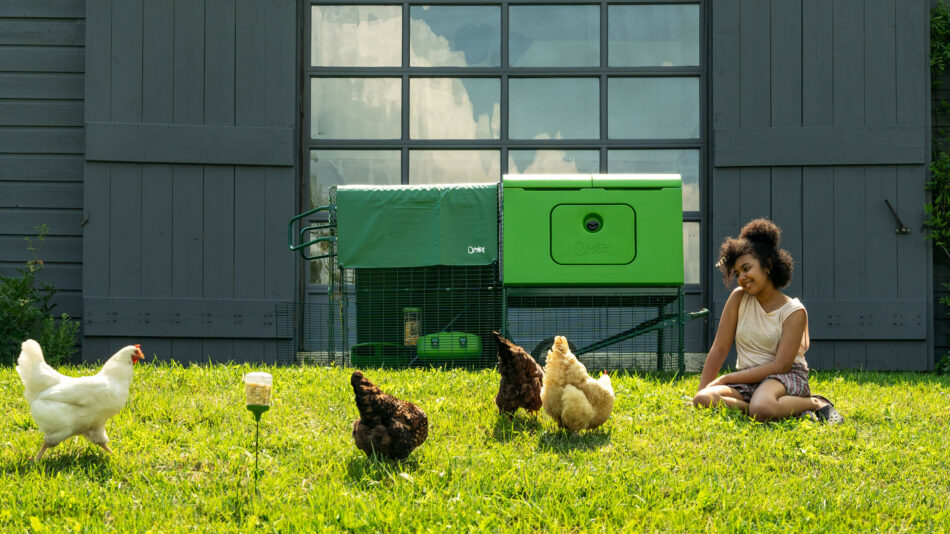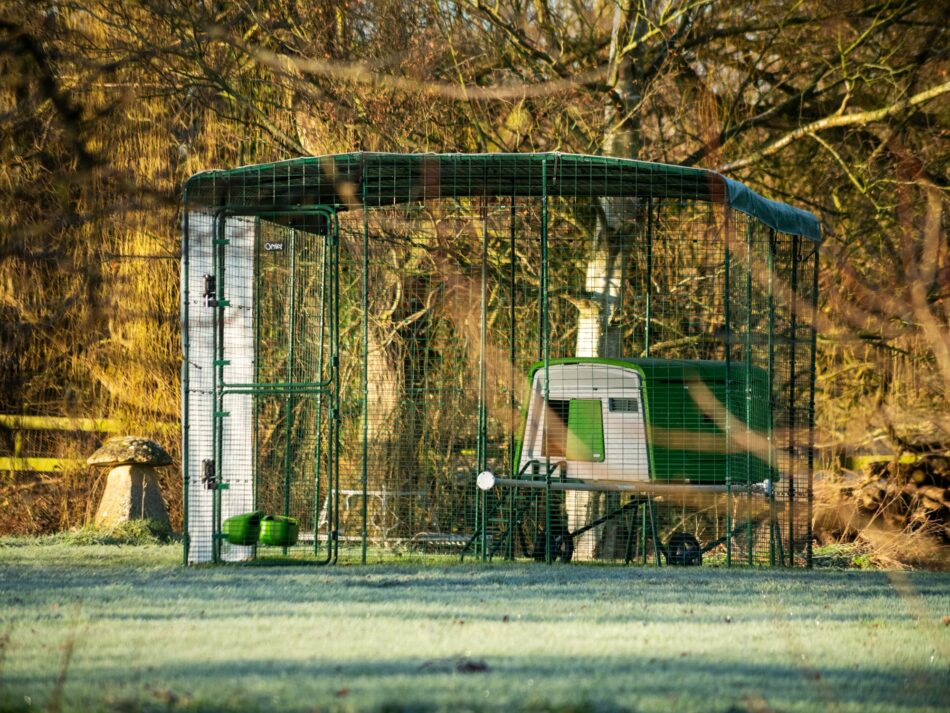How much space do chickens need?
How much space do chickens need? This is a common question among potential and seasoned flock-raisers alike. The number of chickens you keep, their breed, and even their personalities determine how much space they require. Learn how to keep a backyard flock in spaces large and small, and how to make the most of the space you have.
Do I have space for chickens?
Like most animals, chickens appreciate as much space as possible. Chickens are curious foragers by nature, and their space should support this behaviour. But you can keep a small flock of hens healthy and happy in less space than you may think. Here are the general guidelines for chicken space requirements:
- Coop space: 2 square feet per chicken
- Roost space: 12 linear inches per chicken
- Run space: at least 4 square feet per chicken
This loose guideline will help you set expectations for how many chickens you can keep in your backyard or other designated area. The measurements above are for average sized chickens, so depending on the breeds of chickens you keep, you may need to adjust accordingly. Larger breeds will require more space, while bantam breeds can get by with less. Be sure to check with your city or state for chicken keeping laws that may outline additional space requirements or flock size restrictions.
Setting up for your flock
With an idea of how many hens you can keep, you’re ready to consider setting up their home. And just like your own home, arranging your chickens’ setup in a strategic way will help make the most of the available space. From housing to outdoor enrichment, here are the essentials to consider for your flock.
The chicken coop
No matter how many chickens you intend to keep, every flock needs a chicken coop. While there are countless styles and sizes of chicken coops, it’s important to keep in mind that your flock’s coop serves specific purposes. Your hens’ house should:
- Be a safe place to roost at night
- Offer shelter from the weather
- Provide a quiet place to lay their eggs
Chicken coops can also be too large. The problem with oversized chicken coops is two-fold. The first issue is insulation. In colder weather, hens will huddle together and use each other’s body heat to keep warm — but this heat is easily lost in a too-large coop. The second issue is that chicken coops designed for people to be able to enter utilise aerial space for roosting bars. This design makes it difficult for older or heavier hens and chickens with special feathers like Silkies to reach.
Aim for a cozy, comfortable chicken coop rather than a cavernous creation. This way, you’ll be able to dedicate more space where it’s really needed — in their run.
The chicken run
Chickens love to explore and forage, which is why you should aim to dedicate most of their space to the area outside of their coop. Their chicken run should be secure and attached to the coop for easy access. A sturdy chicken run will protect your hens from predators, keep them in their designated area, and provide plenty of enriching activities for your flock.
Adding chicken toys and perches to the run will utilize available space, and get your hens’ minds and bodies working. These elements are essential for keeping your flock entertained and fit — both of which are necessary for healthy, happy hens. Toss in additional enriching elements like leaves, hay, or grass clippings for extra foraging opportunities, and make sure your flock has a space dedicated to a chicken dust bath to keep their feathers in good condition.
If you have a larger space, consider chicken fencing to give your flock even more room to roam. While chicken fencing shouldn’t replace a secure run, it does open up more possibilities for your hens. And, it can be repositioned as often as needed to give your chickens new earth to scratch and insects to chase.
Bringing it all together
At Omlet, we’ve made it easy to determine what size chicken coop and run your flock needs. Our coops come in 3 different sizes:
- The Eglu Pro: up to 10 large chickens or 15 bantams
- The Eglu Cube: up to 6 large chickens or 10 bantams
- The Eglu Go Up & Eglu Go: up to 3 large chickens
With twin-wall insulation, ample ventilation, and comfortable roosting racks instead of bars, your flock will feel fully supported in hen houses that are just the right size.
Our coops have attached runs ranging from 3-12 ft, and can be attached to our Walk In Chicken Run. The Walk In Runs are fully enclosed and feature anti-dig skirting to thwart predators, and can be added onto at any time to increase space as needed. And with added weather protection covers, your flock will be ready for anything the elements have to offer.
These configurations make it possible for backyards of any shape and size to comfortably house a flock of chickens. Whether you’re keeping 3 hens or 13 — our setups support chickens and their keepers.
Omlet and your flock
We’ve studied chickens for over 20 years to invent chicken coops and chicken runs that revolutionise chicken keeping. And with ingenious additions like the Smart Autodoor, keeping a flock of chickens has never been easier. So take the plunge into poultry with Omlet, and discover why thousands of chicken keepers trust our products to keep their flocks safe and supported.
This entry was posted in Chickens


